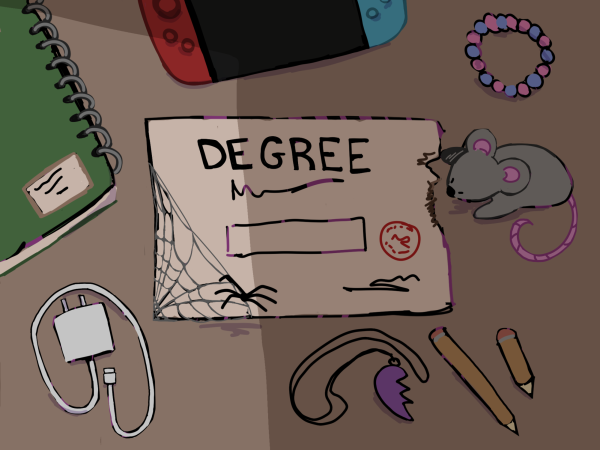Boy Scouts Bankruptcy could herald significant change
The Boy Scouts of America on Feb. 18 filed for Chapter 11 bankruptcy, an action mainly caused by a flurry of child sex abuse lawsuits alleging that Scouters, adult Scout leaders, have abused youth Scouts.
At first glance, it sounds like a bleak time for the BSA. One might think one of America’s greatest and most historic groups is now rife with child predators and that its days are numbered. But at a closer glance, it is apparent the BSA is less nefarious than one would think. In fact, this is really an opportunity for the organization to improve.
The majority of the sex abuse instances cited in the nearly 1,700 asserted sex abuse claims against the BSA occured before 1980, and approximately 90 percent of the reported instances occurred before 1990, according to a debtors’ informational brief submitted by the BSA to the United States Bankruptcy Court for the District of Delaware.
This begs a question: Why is there an increase in lawsuits now, as opposed to when abuse was more common more than 30 years ago?
The increase of lawsuits was able to occur because many states have recently loosened statutes of limitations on sexual abuse cases. A statute of limitations prevents crimes being prosecuted that occured many decades ago. In 2019 alone, 17 states loosened sex abuse statutes of limitations, according to the BSA’s debtors’ informational brief.
According to the brief, from 2017 to 2019 the BSA spent $150 million on legal costs related to sex abuse lawsuits. In comparison, the total net assets held by the BSA as of December 31, 2018, was almost $916 million, according to the BSA 2018 annual report. This figure accounts for liabilities that the BSA paid, such as legal fees.
It can be seen that abuse lawsuits against the BSA represent a significant financial issue.
Two additional issues in the past several years have tightened the BSA’s purse strings, as well.
The first is a decline in BSA membership, meaning that fees paid by Scouts have decreased, falling from more than 2.6 million youth members in 2012 to 2.2 million in 2018, according to BSA annual reports.
The second issue is a lawsuit filed by the Girl Scouts of the United States of America against the BSA on November 6, 2018. The GSUSA alleges that the BSA violated GSUSA trademarks by conducting misleading marketing that implies the BSA and GSUSA have merged or that the GSUSA no longer exists, neither of which are true.
This occurred just a year after the BSA announced girls would be allowed to join its Cub Scouts and Scouts BSA (formerly “Boy Scouts”) programs.
In the lawsuit, the GSUSA has requested that any profits the BSA earned through their “unlawful activities” be transferred to the GSUSA, according to the complaint filed by the GSUSA. Even if the case is decided in favor of the BSA, the organization still has to pay legal fees that could potentially be in the millions of dollars.
The lawsuit and the decline in membership did not cause the BSA’s bankruptcy, but they made the decision to declare bankruptcy more necessary. Even if the BSA had not lost members and was able to fend off the GSUSA’s ire, it would still have had to file for bankruptcy sooner rather than later.
The BSA hasn’t idly sat around letting abuse happen. In the time since the peak of sex abuse in BSA programs in the early 1970s, the BSA has enacted numerous measures to protect children.
In 1991, the BSA implemented the famous “two-deep leadership” rule, prohibiting one-on-one interactions between youth Scouts and Scouters. Since 1994, all staff or Scouters who worked with children also were required to undergo criminal background checks. Since 2010, all BSA volunteers have been required to take youth protection training.
Any level of abuse of children is too much. As a Scout who has never encountered sex abuse in the program, I feel sick that anyone has to go through such a tramautic experience. But saying the BSA has let abuse run wild is a severe, albeit understandable, misunderstanding at best, and an ideological weapon at worst.
So what impact will bankruptcy have for the BSA?
Chapter 11 bankruptcy is not the standard, dissolving-companies type of bankruptcy most people are familiar with. Chapter 11 bankruptcy means that the assets and debts of the organization will be reorganized.
Hopefully, victims of sex abuse in BSA programs will be fairly compensated through the bankruptcy process. Bankruptcy, governed by the courts, is the best way to make sure that survivors of abuse will be able to receive anything at all. A hypothetical collapse of the BSA would make it difficult for survivors to find justice.
Bankruptcy’s impacts can already be felt in our local scouting environment. Three of the Bay Area’s local BSA councils, including the Mt. Diablo Silverado Council that I and other San Ramon Scouts call home, voted on April 27 to merge into a single council. As of June 1, San Ramon’s BSA Scouts will belong to the Golden Gate Area Council.
No official reason is given by either of these three councils for the merger, but it’s no coincidence that the merger is taking place just several months after the BSA filed bankruptcy. Although I will dearly miss the old Mt. Diablo Silverado Council, the merger is a good decision for all parties involved.
Administrative costs will be decreased, providing a financial relief during the bankruptcy. As councils merge across the country, BSA scouts will have access to a wider range of camps and activities that are now in their own council. This bankruptcy, and the changes that are occurring because of it, is transforming the BSA into a sleeker organization with less bureaucratic bloat that is better adapted for the future.

Senior Nicholas Harvey is the Editor-in-Chief for The Californian. Writing for the paper since freshman year, Nicholas is especially interested in the...

